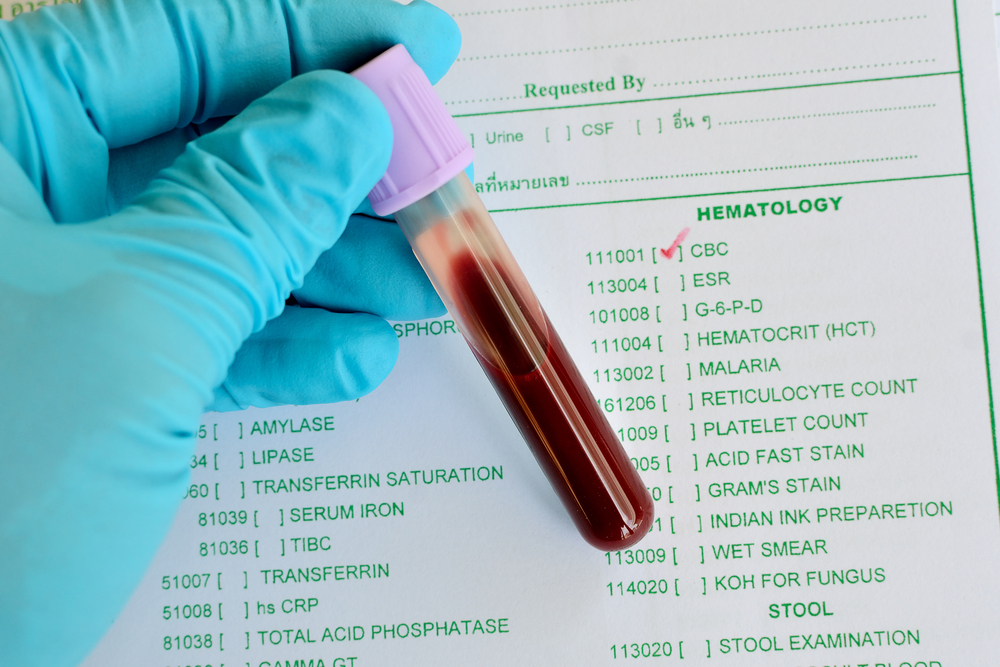IP-10 Could Be Biomarker of Inflammation in Pregnant Sickle Cell Patients, Study Reports
Written by |

The blood level of a small protein called IP-10 could be a way to determine inflammation in pregnant women with sickle cell disease (SCD), according to new research in potential biomarkers.
The exploratory study, “Chemokines in pregnant women with sickle cell disease,” appeared in the journal Cytokine.
Pregnant women with SCD are at greatest risk for both fetal and maternal adverse outcomes than those without this disorder. Chronic anemia and vaso-occlusive crisis — a painful episode that results from obstruction of blood circulation — are the most frequent complications related to sickle cell disease, with babies also susceptible for intrauterine (inside the womb) low growth and reduced weight at birth.
During pregnancy, the immune T-cell mediated secretion of inflammation-related small proteins called chemokines — including interleukin-8 (IL-8) and MCP-1 — leads to the recruitment of white blood cell types monocytes and granulocytes from maternal blood.
Three other chemokines, RANTES, MIG and IP-10, also participate in the activation and recruitment of these cells to sites of inflammation. Also, IL-8, IP-10, and MIG are involved in the formation of blood vessels, which is critical in SCD.
Identifying inflammatory chemokines may provide early diagnosis, prevention, and treatment of complications related to sickle cell disease. However, studies of inflammatory mediators as indicators of SCD severity, particularly in pregnancy, have yet to be conducted.
Scientists compared blood serum levels of chemokines in 20 pregnant women with SCD to those of 24 non-pregnant women with SCD in steady state, 16 healthy pregnant participants without the condition, and 17 non-pregnant controls without sickle cell disease and of childbearing age.
The participants — 85.7% self-defined as black or mixed race — were enrolled in the prospective study at a tertiary public hospital in Recife, Brazil, from September 2014 to October 2015.
No pregnant woman with sickle cell disease used the SCD medication hydroxyurea during pregnancy. Infection (50%) and preeclampsia (35%) — characterized by high blood pressure and organ damage, most often in the liver and kidneys — were the most frequent adverse maternal outcomes, while low birth weight (35%) was the most common among perinatal outcomes.
VOC was the major clinical SCD complication (85%), with all pregnant women with SCD undergoing blood transfusion during pregnancy.
Blood samples of women with sickle cell disease were collected in the second trimester of pregnancy and at least 30 days after blood transfusion, while blood samples of nonpregnant women with SCD were obtained during the steady state. Samples from women without SCD were derived from a database of women with similar ages and socioeconomic status.
Results showed that levels of MIG were higher in pregnant women with sickle cell disease than in pregnant women without SCD and in nonpregnant controls. It was also higher in SCD women not pregnant than healthy women regardless of being pregnant or not.
As for RANTES, the only significant difference was found in the higher levels of pregnant women without SCD than in nonpregnant SCD patients. IP-10 levels were higher in pregnant women with sickle cell disease than in all three other groups.
Regarding IL-8, pregnant women without SCD had lower levels than SCD patients, regardless of pregnancy status. Also, IL-8 levels were higher in nonpregnant patients than in controls. No differences were found in any MCP-1 level comparisons.
Overall, the investigators suggested that the higher levels of MIG and IL-8 in SCD patients were likely related to disease activity, but not to pregnancy.
Also, the higher level of IP-10 in pregnant women with sickle cell disease suggests that this chemokine may be responsible for the inflammatory response.
“IP-10 could be an effective biomarker to evaluate inflammatory status in pregnant women with SCD,” the researchers wrote.
“This study is the first of its kind to evaluate chemokines in pregnant women with SCD and could serve as a basis for future research, to improve the understanding of the mechanisms of chemokines in adverse outcomes in pregnant women with SCD,” they added.





